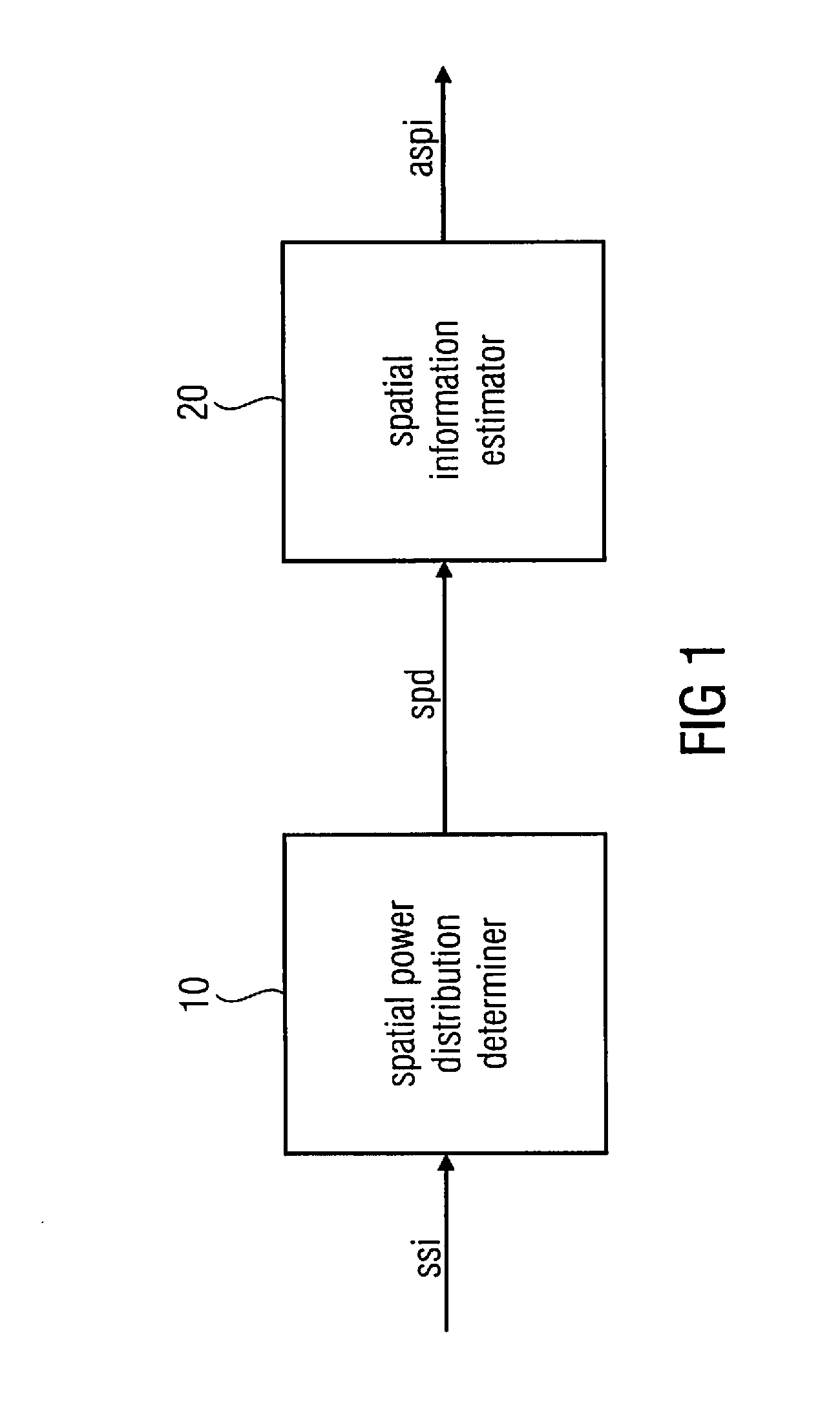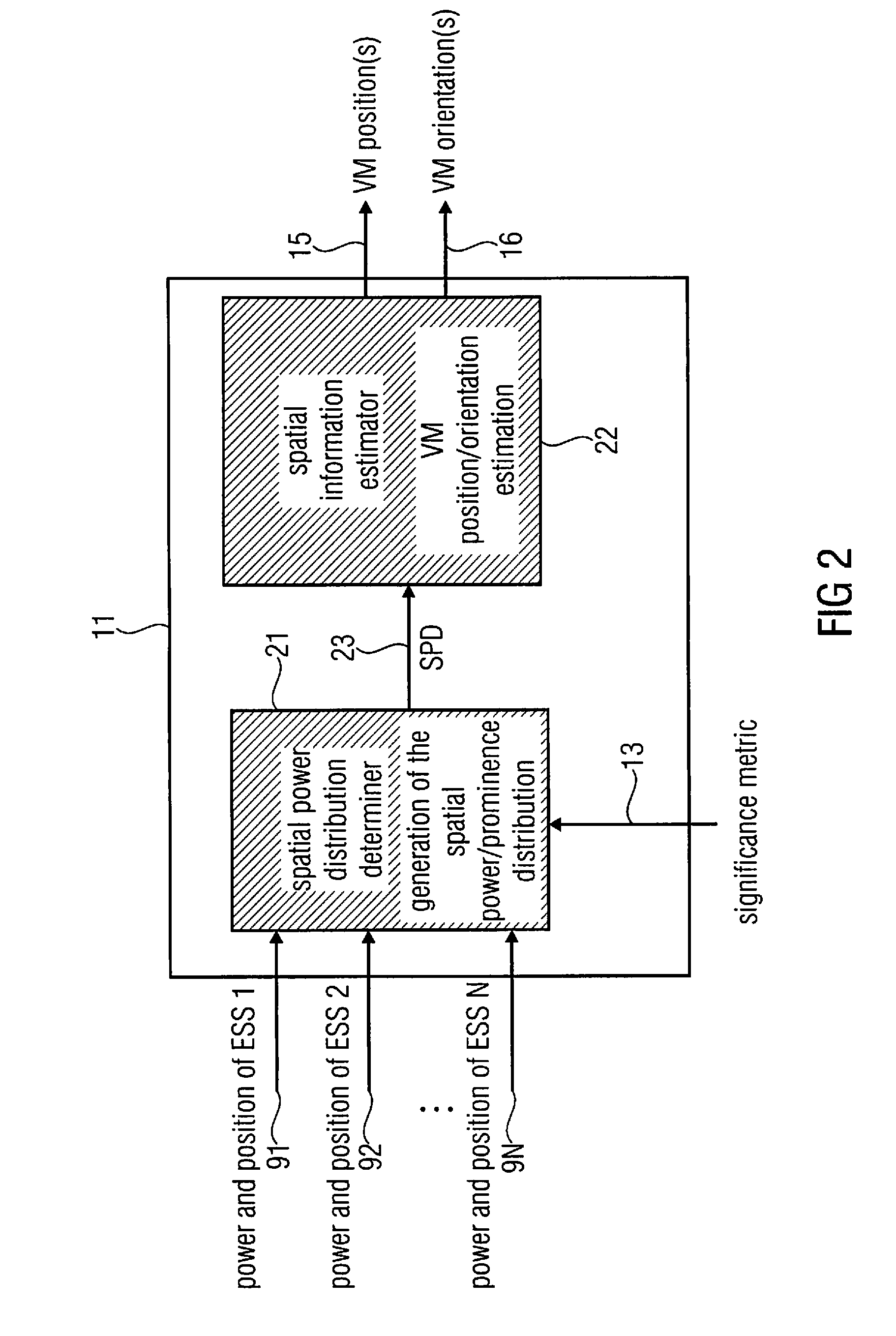Apparatus and method for microphone positioning based on a spatial power density
- Summary
- Abstract
- Description
- Claims
- Application Information
AI Technical Summary
Benefits of technology
Problems solved by technology
Method used
Image
Examples
first embodiment
[0097]According to a first concept of a first embodiment, the center of the sound scene is obtained by computing the center of gravity of the SPD Γ(x,y,z). The value of Γ(x,y,z) may be s interpreted as the existing mass at point (x,y,z) in space.
second embodiment
[0098]According to a second concept of a second embodiment, the position in space with a minimum time dispersion of the channel shall be found. This is achieved by considering the root mean squared (RMS) delay spread. At first, for each point in space p=(x0, y0), a power delay profile (PDP) Ap(τ) is computed based on the SPD Γ(x, y, z), for instance using
Ap(τ)=∫x∫yΓ(x,y)·δ(t-τ)yx
where τ=√{square root over ((x−x0)2+(y−y0)2)}{square root over ((x−x0)2+(y−y0)2)} / c
[0099]From Ap(τ), the RMS delay is then calculated using the following equation:
τRMS,p=∫0∞(τ-τ_s)2Ap(τ)τ∫0∞Ap(τ)τ,
where Ts represents the mean delay of Ap(τ). The position for which the mean delay TRMS,p is minimum will represent the center of the sound scene.
third embodiment
[0100]According to a third concept of a third embodiment, which may be employed as an alternative to sound scene center estimation, a “circle-integration” is proposed. For example, in the 2D case, the SPD Γ(x, y) is convolved with a circle C(r,o), according to the following formula:
g(x,y)=Γ(x,y)*C(r,o)(x,y),
wherein r is the radius of the circle, and wherein o defines the center of the circle. The radius r may either be constant or may vary depending on the power value in the point (x,y). For example, high power in the point (x,y) may correspond to a large radius, whereas low power may correspond to a small radius. Additional dependencies on the power may also be possible. One such example would be to convolve the circle with a bivariate Gaussian function before using it for constructing function g(x, y). According to such an embodiment, the covariance matrix of the bivariate Gaussian function becomes dependent on the power in the position (x,y), i.e., high power corresponds to low v...
PUM
 Login to View More
Login to View More Abstract
Description
Claims
Application Information
 Login to View More
Login to View More - R&D
- Intellectual Property
- Life Sciences
- Materials
- Tech Scout
- Unparalleled Data Quality
- Higher Quality Content
- 60% Fewer Hallucinations
Browse by: Latest US Patents, China's latest patents, Technical Efficacy Thesaurus, Application Domain, Technology Topic, Popular Technical Reports.
© 2025 PatSnap. All rights reserved.Legal|Privacy policy|Modern Slavery Act Transparency Statement|Sitemap|About US| Contact US: help@patsnap.com



